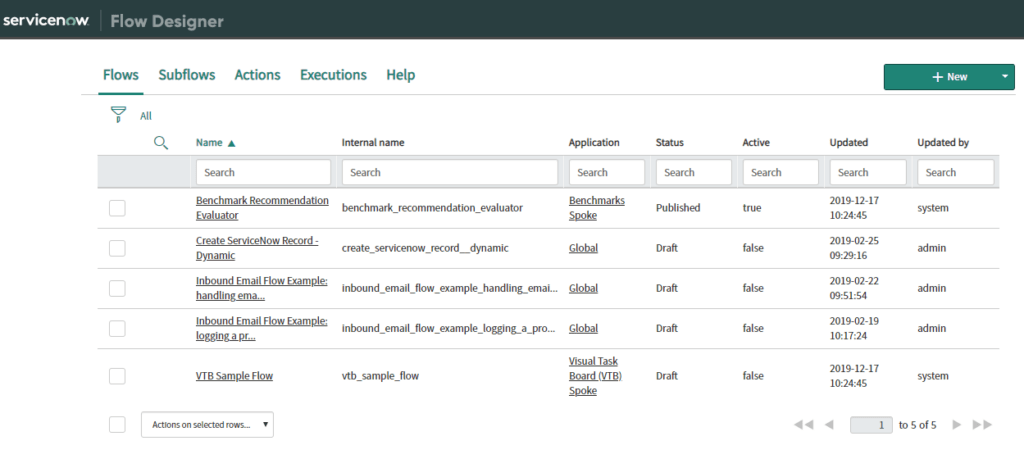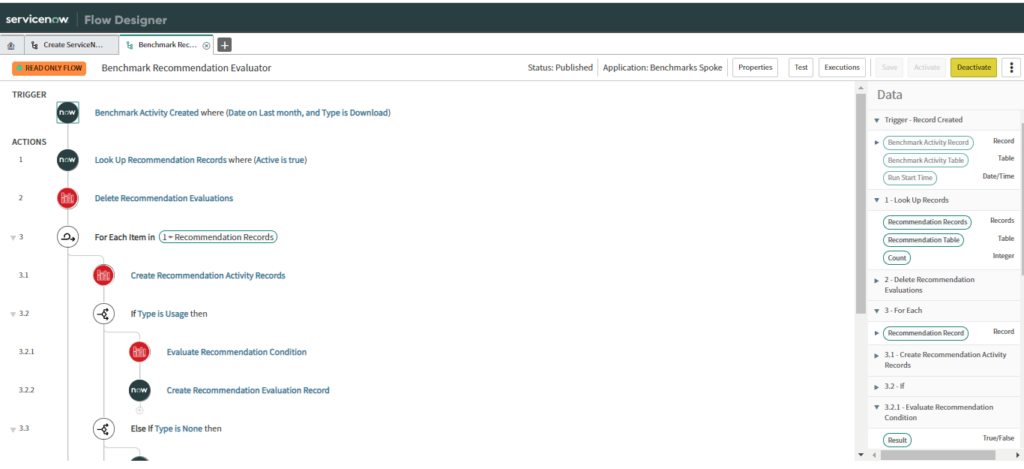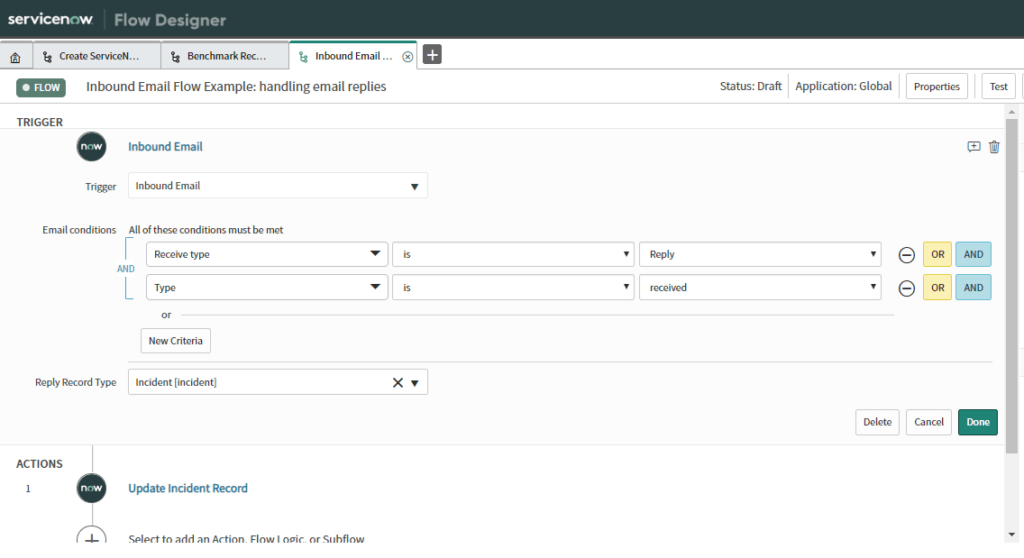Intelligent Automation with ServiceNow Flow Designer
ServiceNow drives intelligent automation of business processes with the Flow Designer, where anyone who is not a developer can create and check workflows to automate approvals, tasks, notifications, and record changes. One of the benefits of using the Flow Designer is that it provides a library of reusable actions and flows to make development simple. Here we discuss how Flow Designer facilitates intelligent automation within ServiceNow.
How Flow Designer Promotes Intelligent Automation
- Flow Designer unites capabilities in a single environment. As the Flow Designer blends configuration and runtime data into one environment, it makes it easier for developers and process owners to develop, troubleshoot, and visualize developments in a single interface.
- Flow Designer authorizes users to automate processes by obtaining developer skills from codeless flow components that are easy to discover and reuse.
- Extends workflows and makes new workflows with OOTB reusable flow components for ITSM, CSM, SecOps, Benchmarks, and more.
- Minimizes upgrade costs by providing upgrade safe platform logic, which in turn reduces the overhead of writing custom code.
- Integrates effortlessly with third-party services. Ensures end-to-end digital workflows with reusable OOTB integrations to business applications by using Integration Hub.
- Enables users to use natural-language-descriptions of the flow logic, making it easy for non-technical users to understand triggers, actions, inputs, and outputs.
- Facilitates process automation by permitting Subject Matter Experts to develop and share reusable actions with Flow Designers. This way, the Flow Designer avoids development costs by providing a library of reusable actions.
When to Use Flow Designer
Here are two important instances where Flow Designer can bring better results:
- If the logic of action is sequential (X -> Y -> Z) and with few logic branches, the Flow Designer is a fast and simple way to build and test workflows.
- When a no-code method is needed for creating common logic. For example: Triggering a notification for a specific reason or for data cleaning, here Flow Designer can be a better solution. Essentially, we can think of Flow Designer as a codeless way to do a scheduled job, to process data conventionally, and as a business rule to trigger a workflow.
Content Types in a Flow Designer
Flow designer has the below content types.
- Flows: Automated business process with a system of actions and a trigger. It automates a business logic for a specific application or method. Flows demand knowledge within the ServiceNow platform tables and fields that the application or process uses. Process experts can create flows with existing actions or replicate an existing flow like a template.
- Sub-flows: A sub-flow contains a series of reusable actions and data inputs that enable the process to begin from a flow, sub-flow, or script. These automate generic business logic that can be applied to multiple applications or processes.
- Actions: Action is a reusable action that enables process experts to conduct automation without the need for coding. The Create Record action enables the creation of records in a specific table with specific values when a specified condition happens.
- Core Actions: Core Action is a ServiceNow-provided action available to any flow that cannot be viewed or altered from the Action Designer design environment. For instance, the approval action is a core action that permits process experts to use ServiceNow platform approvals. Flow Designer avails a set of core actions to automate processes. Users can add application-specific core actions by activating the related Spoke.
- Action Steps: This is a single reusable operation within an action. Flow Designer provides a set of core action steps to automate processes and one can add application-specific Action Steps by activating the associated Spoke.
- Spokes. Spokes stay activated only until its parent application is active. To create a Spoke, one must have the expertise with application development because developers must add Flow Designer content to a scoped application.
Step to Use ServiceNow Flow Designer
Step1: Automate processes in a codeless natural language environment

Step 2: Use reusable out-of-box components features to automate the process

Step 3: Inbound mail trigger and action with no code

Conclusion
Flow designer merges various ServiceNow platform automation capabilities, configurations, and runtime information in one interface, making it easy for developers to manage flows with no-code. But it is required to carefully properly analyze and make sure that the logic of action is sequential and the workflow to be automated has to be defined very precisely.
About The Author
Hari Prasad Viswanathan has 4+ years as a ServiceNow Developer. He is ServiceNow certified: System Administrator, Implementation specialist and Application Developer. Also, he is ITIL V3 certified. He has very good Knowledge of ServiceNow configurations and Implementations. His expertise is also into ITSM, CMDB and JavaScript.












